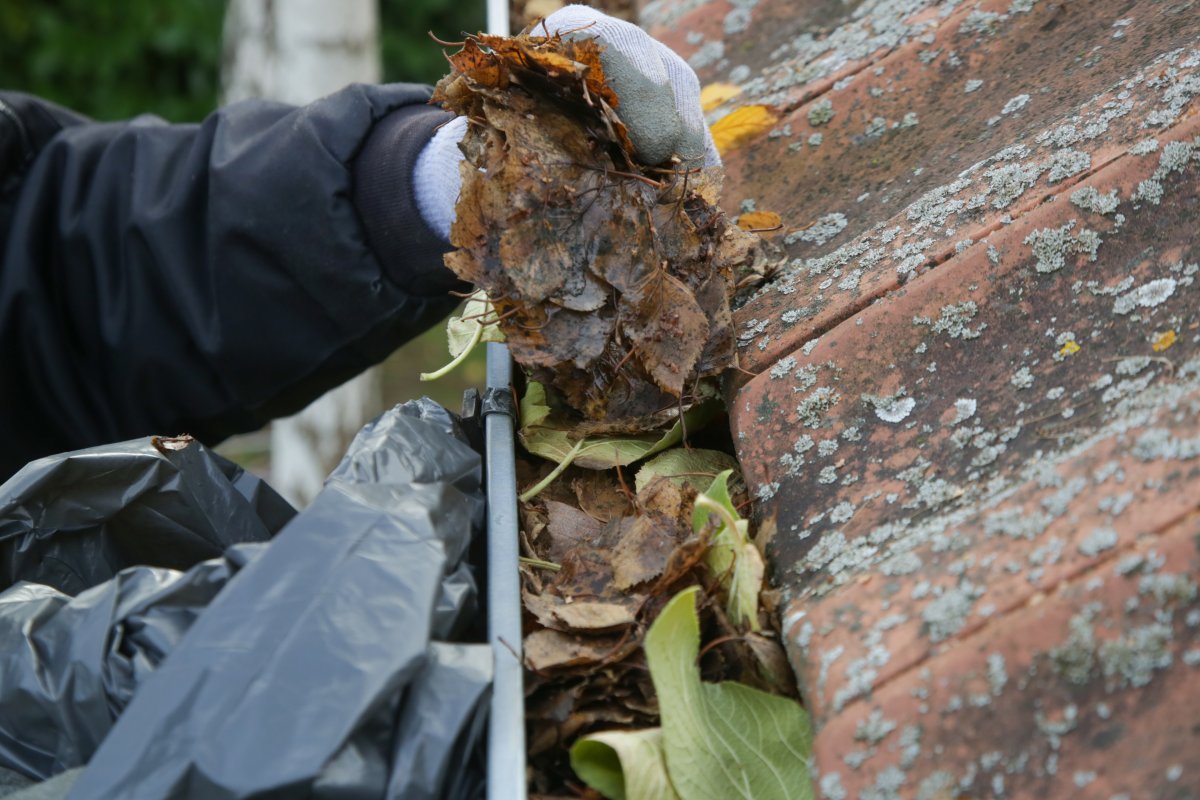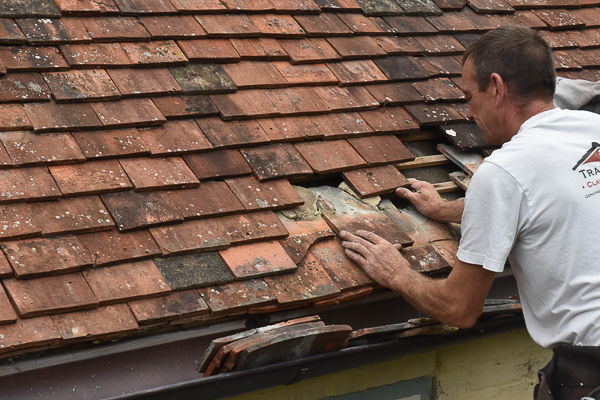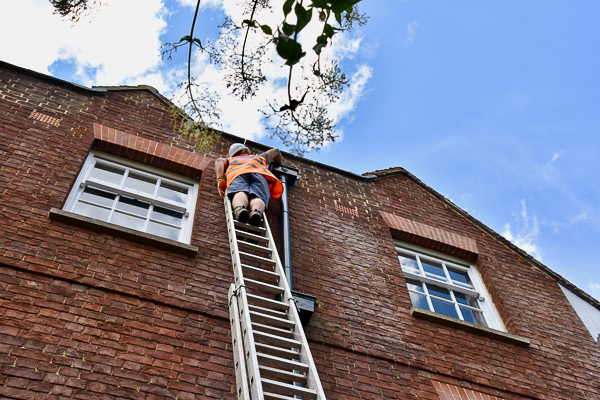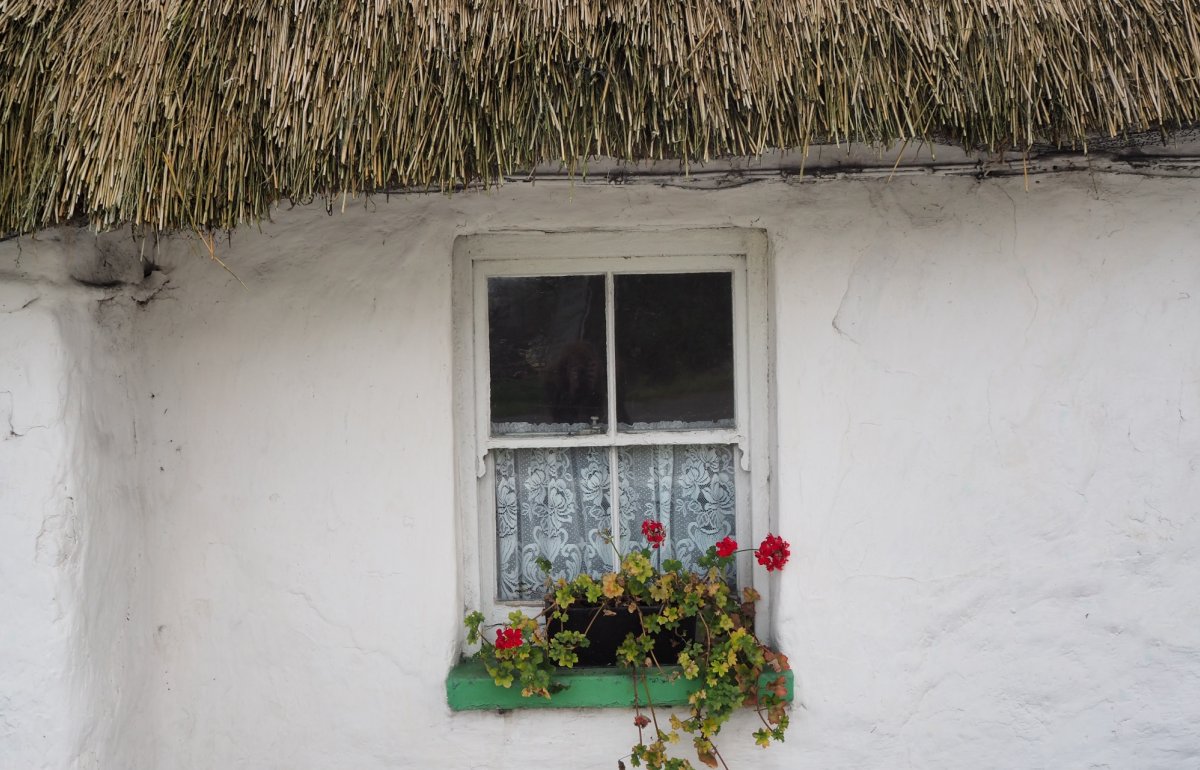Money-Saving Maintenance Tips to Keep Your Home Warm and Dry This Winter
Share on:
With so many households feeling the cost-of-living squeeze, this Maintenance Week we're sharing some quick and simple maintenance tasks that can help keep your home warm and comfortable this winter.
The rising cost of living means many of us have changed how we’re heating our homes. In Britain, half of us are using less fuel like electric and gas, and 39% of adults say they’re struggling to afford their heating bills.
No matter the age or style of your home, there are some simple (and most often free) maintenance tasks you can do right now to make a difference to its condition, lifespan, and energy efficiency. Tackling any problems you find sooner rather than later can also save you money on expensive repairs further down the line.
Keeping your home warm and dry
Damp is the number one cause of damage and deterioration in old buildings. It also makes heating our homes more difficult. In fact, a damp wall is 30% less thermally efficient than a dry one.
Ahead of winter, it's a good idea to check for any visible signs of damp inside and outside your home. Try to do this during or after heavy rainfall, as you’ll be able to spot the signs more easily.
It's important to treat the underlying cause of the problem, rather than just treating the symptoms. If you identify a problem and you're unsure of what to do next, you can call our free advice line to speak to a conservation professional, or contact another independent specialist. If you live in an old building, you'll want to talk to someone with specialist knowledge, as using modern damp treatments on a traditionally constructed building will cause more harm than good.

Clearing the gutters can help prevent damp in the walls. Credit: Triocean
Look for tell-tale signs of damp, like discolouration or streaking on walls. If your walls are limewashed, you’ll see darker areas where it has absorbed water into the wall. Outside, you might see green staining behind or around the rainwater fittings where water is leaking into the wall.
Check walls for deeply eroded mortar joints, damaged bricks or stones, and signs of movement. You can fill in gaps and cracks with a lime mortar that contains animal hair as a reinforcement, a chalk lime mix, or ship caulking.
Water will also seep into the walls if your gutters or rainwater fittings are blocked or defective. Be sure to check for signs of damage, clear out leaves and debris, and stop plants from growing near drains and gutters.
Of course, rain will easily get in through a damaged roof. Check for missing or damaged slates using binoculars. Inside the roof space, look for gaps or daylight showing through the roof overhead. You can also look for broken tiles or mortar debris on the ground which can indicate a problem. Repair or replace as needed.

Rain can get in through a damaged roof, so replace slipped or damaged tiles. Credit: Marianne Suhr
Regular maintenance and repair
Whether it’s a slipped tile or a rotten window frame, spotting problems early and carrying out repairs in good time can prevent costly works further down the line. As the old saying goes, “a stitch in time saves nine”.
For example – if you have cast iron gutter that has a damaged joint, a quick repair could stop dampness from building in your wall. Having the joint re-caulked or sealed will often be far cheaper (and look more lovely) than replacing the entire thing with a new plastic gutter.
Of course, repairing rather than replacing is the more sustainable choice too.
Check your heating system
With fuel so costly, we want to make sure our heating systems are running as efficiently as possible this winter. Remember to get your boiler checked by a qualified person every year, which is vital for both safety and efficiency. One quick (and free!) thing you can do right now is to bleed your radiators. This will get rid of any air locks that may be making your radiators less efficient, so your room should get warmer quicker.
If you use a fireplace to heat your home, you’ll need to sweep the chimney thoroughly before you use it this winter. This will improve its efficiency and also reduce the risk of dangers like chimney fires. We’d recommend contacting a properly registered chimney sweep, but you can also sweep the chimney yourself. Make sure to completely remove the build up of soot, scrap back any tar, and remove any bird's nests. Just be careful not to damage the chimney lining in the process.

SPAB Scholar Lewis Hobbs clearing out the rainwater fittings at Boxley Abbey. Credit: Rachel Stoplar
Simple ways to draught-proof your home
A good way to save money on heating bills is to properly draught proof our homes. Often, you’ll have a good idea of where draughts are coming from. If you’re unsure, look for spider’s webs, as spiders build these strategically where there is a good airflow, to help them catch their prey.
Windows and doors that don't shut properly will result in draughts. Most often this is just a case of simple repairs and maintenance, like stripping back layers of old paint that may be making it harder for a sash window to close. Heavy curtains, draughtproofing strips, and DIY draught excluders can also make a noticeable difference.
If your floorboards are draughty, you can use a heavy rug or other floor covering, which you may be able to get second-hand. Plug gaps with strips or timber, papier-mache, or store-bought draughtproofing.
Fill in cracks and plug gaps around the home to end unwanted draughts, but just remember not to block any intentional ventilation (like airbricks) as these stop your home from becoming damp.
If you're struggling to pay your energy bills, check the Government website to see what support is available. If you’d like more advice on maintenance and repair for your old house, you can call our free Technical Advice Line (open weekday mornings).
National Maintenance Week (17-24 November) is our annual celebration of the importance of maintenance and repair for buildings of any age and style. Follow us on Twitter, Instagram, and Facebook for more tips and get involved on social media using #MaintenanceWeek and tagging @spab1877.
Sign up for our email newsletter
Get involved


